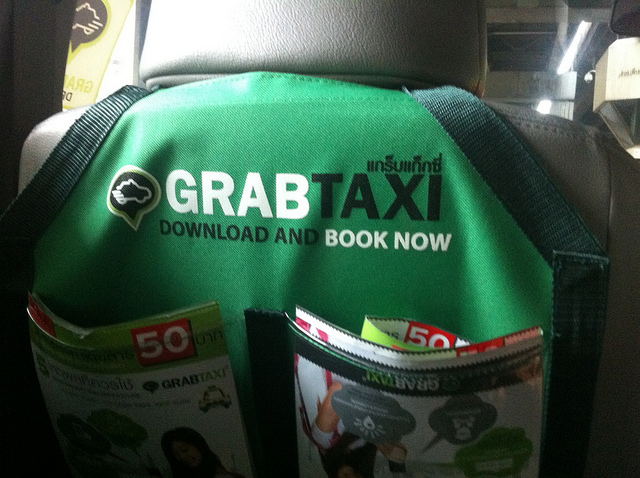Billion Dollar Unicorns: Grab Gives Uber A Ride Out Of Southeast Asia
According to a recent Grand View Research report, the global on-demand transportation market is expected to grow 20% annually over the next few years to $290.3 billion by 2025. The high growth rate is attributed to continued penetration of smartphones and connected vehicles. While Uber remains the market leader in the industry, localized offerings in other regions are strongly gaining ground. Singapore-based Grab, also known as Grab Taxi, is one such Billion Dollar Unicorn in Southeast Asia.

Photo Credit: Jon Russell/Flickr.com
Grab’s Financials
Grab was founded in 2012 by Harvard students Tan Hooi Ling and Anthony Tan. It started its operations as Grab Taxi in Malaysia through an app called My Teksi. The app was initially adopted by 30 taxis in Malaysia before it gained prominence in the region. Grab has not looked back ever since. Today, Grab is present in 8 countries including Malaysia, Singapore, Indonesia, Thailand, Vietnam, Cambodia, Philippines, and Myanmar. Besides providing ride hailing services, the company also offers additional services such as car-pooling, private car rides, bus service, motorcycle hailing, and a delivery service.
Grab charges commissions on booking fees for each ride booked through its app. It is privately held and does not disclose its detailed financials. But recent reports suggest that the company may have become the first mobile travel technology company in Southeast Asia with an annual revenue of US$1 billion. However, it is still not profitable as it continues to invest in market expansion. It forecast revenues of $2 billion for the next year given the acquisitions that it made recently.
Grab has raised $6.1 billion in funding from investors including Toyota, Didi Chuxing, Emtek Group, Tokyo Century, Softbank , GGV Capital, Tiger Global Management, and the Singapore government’s Vertex Venture Holdings. Its last round of funding was held earlier this year when it raised $1 billion in a round that was led by Toyota Motor Corporation at a $10 billion valuation. The investment from Toyota will help the two work together to build a more efficient transport network to better manage the traffic congestion in Southeast Asia’s megacities. Grab’s valuation has constantly been rising as it grew from $3 billion in 2016 to $6 billion last year, to $10 billion now.
Grab’s Acquisitions
Grab’s biggest news this year has been the merger with Uber’s Southeast Asia business. As part of the transaction, Uber exited the Southeast Asian business and acquired a 27.5% stake in Grab at a valuation of $6 billion. Over the past few years, Uber has been slowly exiting from some big markets. In 2016, it sold its Chinese operations to Didi, and then, last year, it backed out of the Russian market as well. The Southeast Asian market has been a tough one for Uber given the competition it faced from Grab itself. The merger will help Grab continue to manage competition that it faces from Indonesian rival Go Jek.
Earlier this year, Grab also announced the acquisition of mobile payments platform iKaaz for an undisclosed sum. Bangalore, India-based iKaaz had 75 engineers at the time of the acquisition. It was founded in 2012 by Nokia alumnus Soma Sundaram. Its products include a cloud-based platform for online sellers, point of sale hardware for retail merchants, and a mobile wallet solution. Grab plans to leverage the acquisition to develop its GrabPay service. Grab is driving users to use GrabPay not only for ride sharing payments, but also for other merchant payments.
I would like to know what is it that makes users gravitate to a particular ride hailing service? What helps you decide between Uber, Lyft, Grab, Ola and the various others out there, given the similarity in services that all of these companies provide?



